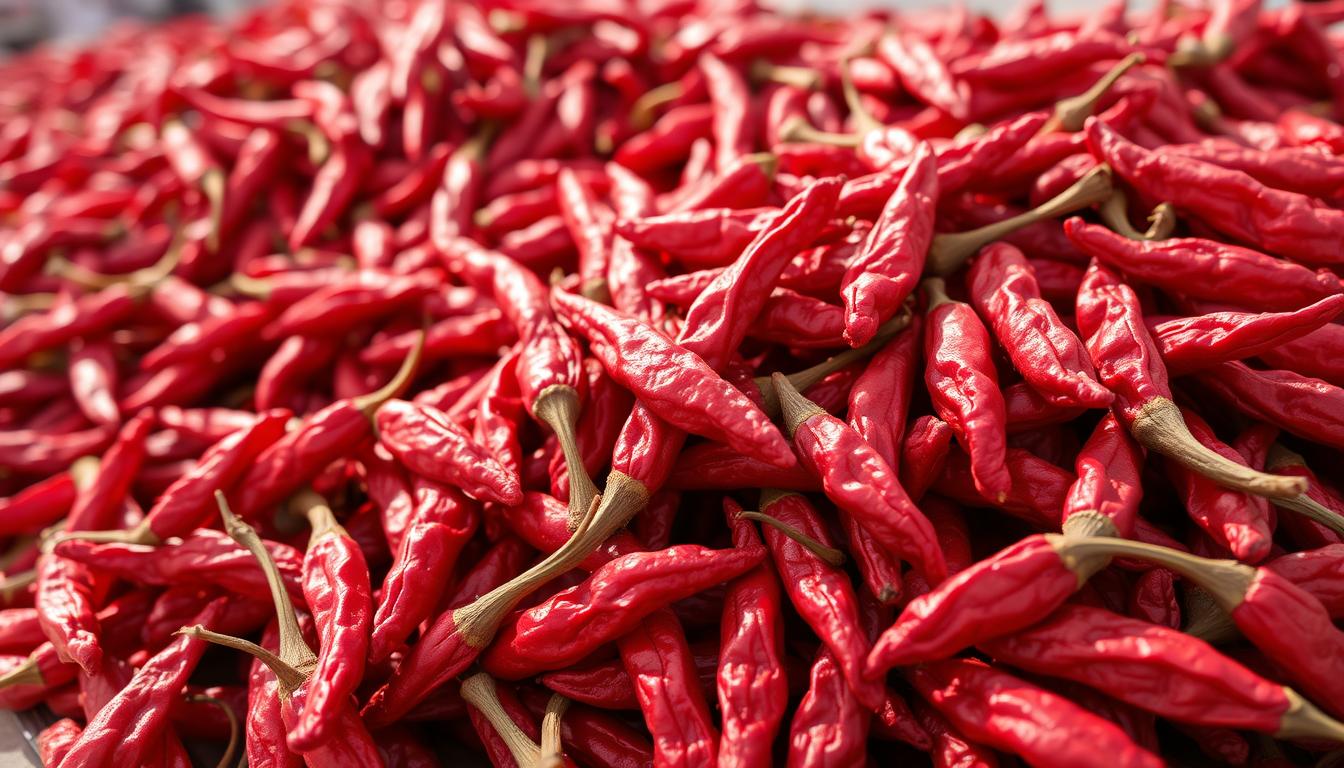Discover India's Best Dry Red Chilli Exporter for Your Business

India leads the world in dry red chilli exports, bringing vibrant flavors and consistent quality. The dry red chilli export from india industry is key in the global spice trade. It sends over 350,000 tons of chillies every year.
Indian farmers grow premium chillies like Byadagi and Sannam. They do this in places like Telangana and Andhra Pradesh. These areas mix old farming ways with new tech to make sure the products are the best.
As a leading red chilli exporter, India meets global standards for taste, smell, and shelf life. The $250 million market value shows how much the world wants these spices. Buyers looking for reliable suppliers should choose those with certifications and traceability systems. This ensures the products are consistent and safe.
Key Takeaways
- India dominates global dry red chilli trade with 35% market share.
- Key regions like Telangana and Andhra Pradesh supply 60% of India’s total exports.
- Indian chillies are prized for high capsaicin content and natural color retention.
- Exporters with ISO 22000 and FSSAI certifications guarantee food safety compliance.
- Annual export revenue exceeds $250 million, supporting 2 million farming households.
The Growing Market for Dry Red Chilli Export from India
India leads in global chilli exports, thanks to being the top red chilli producer india. The growth shows the success of farming strategies and the increasing demand worldwide. Andhra Pradesh and Karnataka are key players, thanks to their perfect climate and soil for growing chillies.
Major Chilli Growing Regions in India
Leading states play a big role in India’s export success:
Andhra Pradesh: Known for Guntur Sannam, loved for its heat and taste.
Karnataka: Famous for Byadgi chilli, prized for its aroma and color.
Other areas like Maharashtra and Tamil Nadu also grow different types.
Popular Indian Chilli Varieties for Export
Exporters focus on top-quality varieties:
- Guntur Sannam: Has 40,000-80,000 Scoville units, great for spice mixes.
- Byadgi: Known for its dark color and fruity taste, perfect for pickles and sauces.
- Kashmiri: Bright red color, used in paprikas and cosmetics.
- Teja: High heat, ideal for hot sauce makers.
Join us as we plant the seeds of change and nurture a world of growth and opportunity together.
Conclusion: Partnering with the Right Indian Chilli Exporter
Choosing a trusted bulk red chilli supplier means getting top-quality products. These products meet international standards. In India, leading dry red chilli makers offer a wide range, like Byadagi and Sannam. They have strong certification programs.
Businesses should look for exporters with a track record in global markets. They should also have clear and open supply chains.
Check if suppliers have certifications like FSSAI and ISO. Make sure their facilities follow safety rules. It’s key to know the quality standards and how they test products before buying in bulk.
Good communication and quick customer service are important. They help avoid problems in international deals.
When buying, talk about payment options like LC or advance payments. Make sure the shipping path is right for fragile goods. The packaging must meet global standards to keep goods fresh during travel.
Contracts should clearly state when goods will arrive and what quality to expect. This protects both sides.
Indian exporters are using new drying methods and organic farming. They offer unique varieties like Golmi and Bhut Jolokia. Working with certified makers lets you tap into these trends while keeping the supply chain reliable.
Focus on building long-term partnerships. This way, you can benefit from India’s leading role in spice exports.
Recent Post
